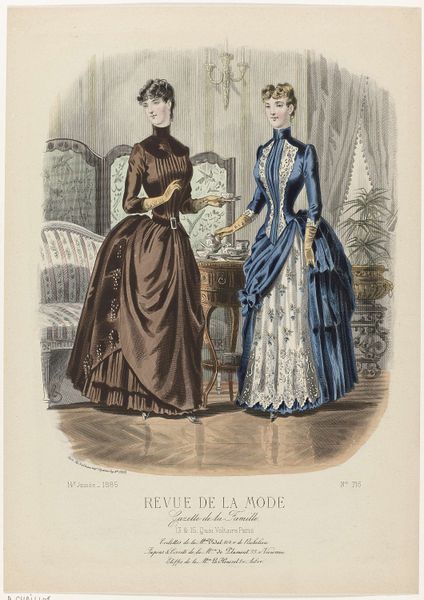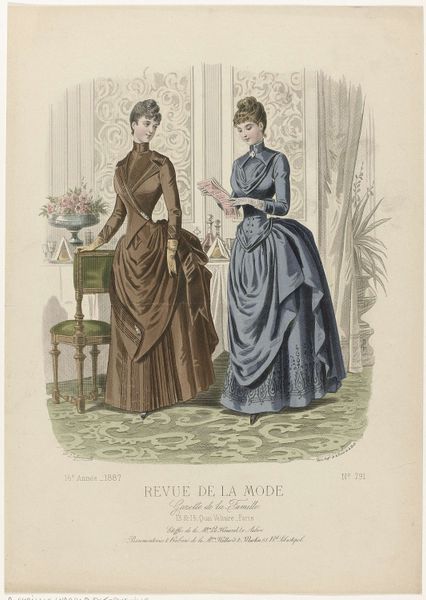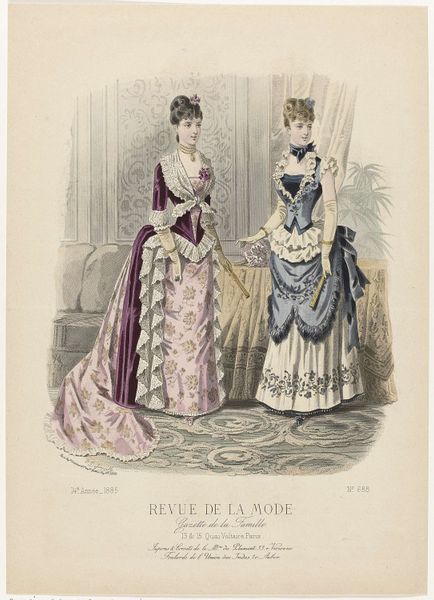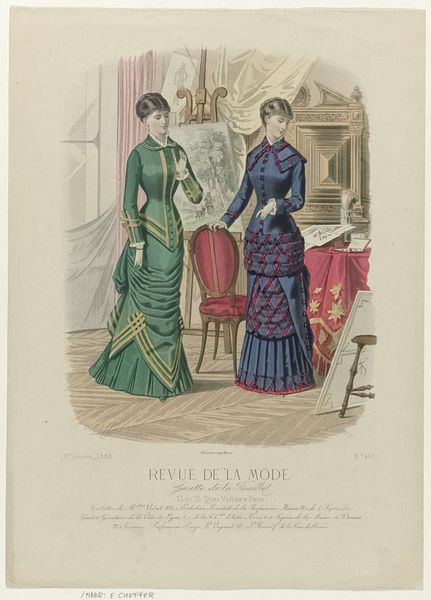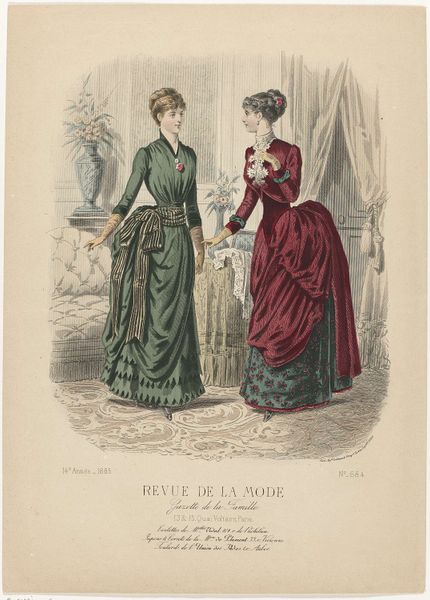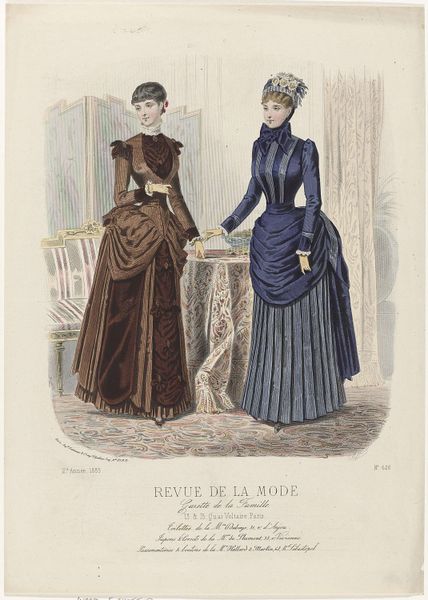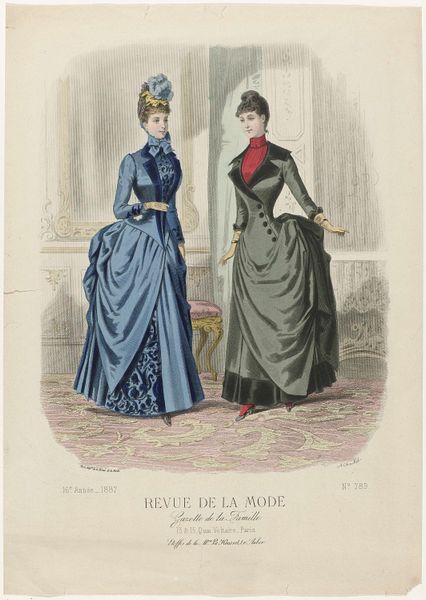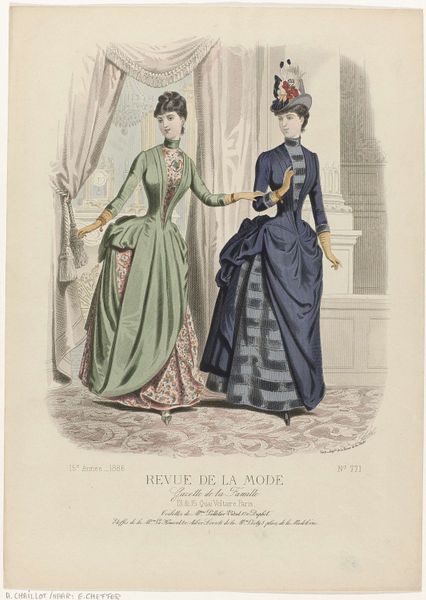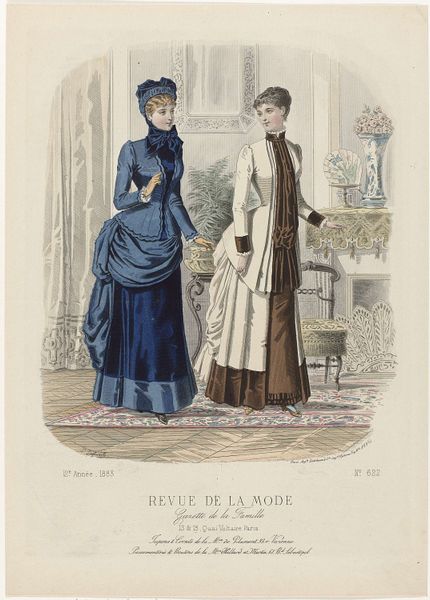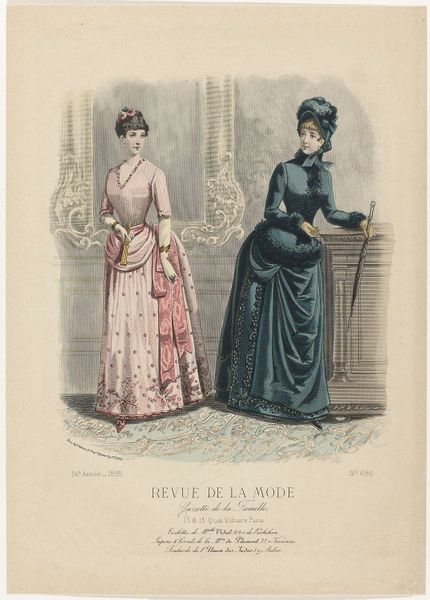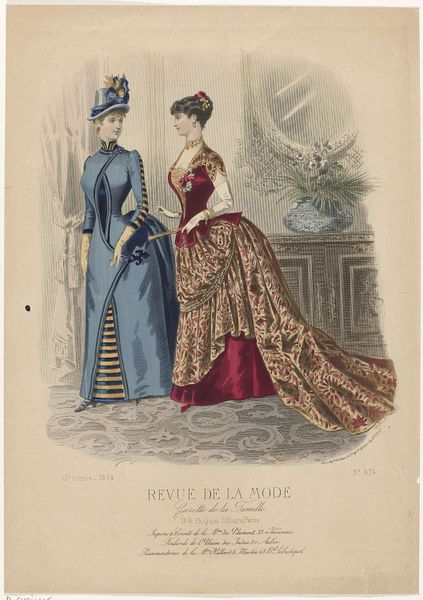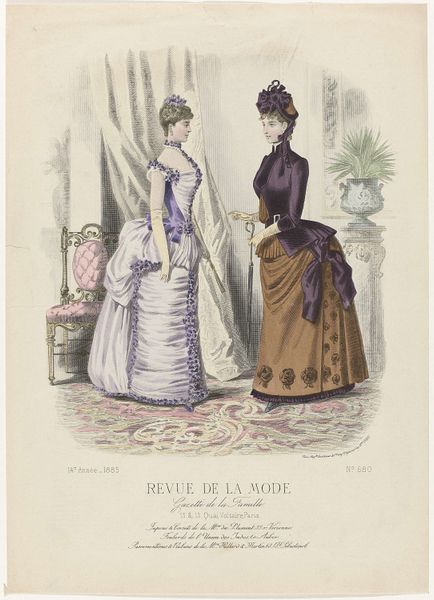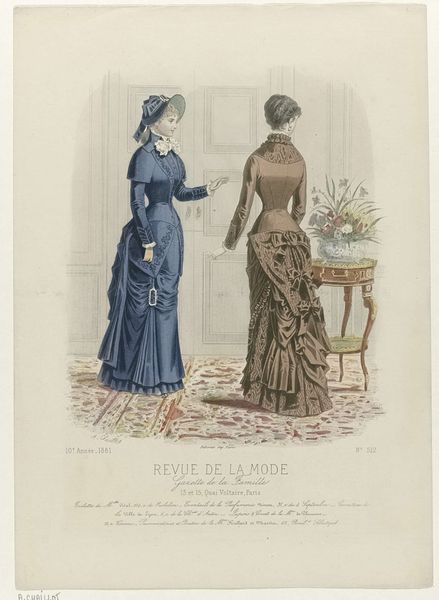
Revue de la Mode, Gazette de la Famille, dimanche 17 décembre 1882, 11e année, No. 572: Toilettes de M.mes Vidal (...) 1882
0:00
0:00
drawing, lithograph, print, etching
#
portrait
#
drawing
#
art-nouveau
#
lithograph
# print
#
etching
#
figuration
#
genre-painting
#
realism
Dimensions: height 375 mm, width 265 mm
Copyright: Rijks Museum: Open Domain
Editor: So, this print is from 1882, and it’s by E. Cheffer. The full title is "Revue de la Mode, Gazette de la Famille…," a lithograph and etching featuring two women modeling dresses. I am struck by the detailed ornamentation of the gowns—almost architectural in complexity. What catches your eye? Art Historian: The art of fashion plates provides a valuable entry point into examining the construction of femininity during this period. The intricate detailing that appeals to you speaks volumes about the labor involved in creating these idealized images of women's roles in late 19th-century European society. Have you considered the power dynamics at play? Editor: I haven't really thought about it that way. You mean, like, who is consuming these images, and what messages are they receiving? Art Historian: Precisely. "Revue de la Mode" was marketed to a specific demographic—affluent, white women—and its imagery reinforced their prescribed roles as consumers and fashion icons. It's vital to think about what is *not* shown here, and whose experiences are erased to present this aspirational standard. Consider the socio-economic disparities reflected in these illustrations. How do the depicted fashions serve as a marker of class and status, while simultaneously obscuring the labor required to produce them? Editor: So it’s not just about the pretty dresses…it's a statement about social standing and who has the "right" to be visible and stylish. That shifts my understanding entirely. Art Historian: Exactly. Looking at this image, we can examine how structures of power and representation are intertwined. And perhaps start conversations about how contemporary fashion continues or challenges these legacies. Editor: This has been incredibly insightful! I'll definitely be approaching images like these with a more critical lens going forward. Art Historian: Likewise. It's through these kinds of conversations that we start unpacking the deeper meanings embedded within artworks and connect them to our present moment.
Comments
No comments
Be the first to comment and join the conversation on the ultimate creative platform.

